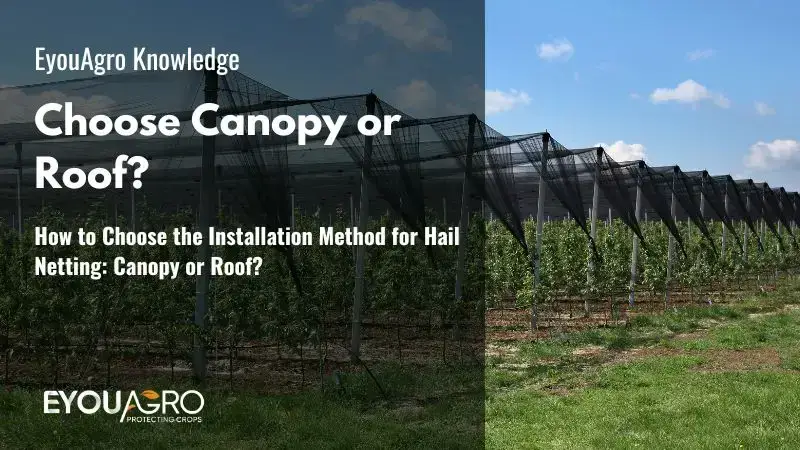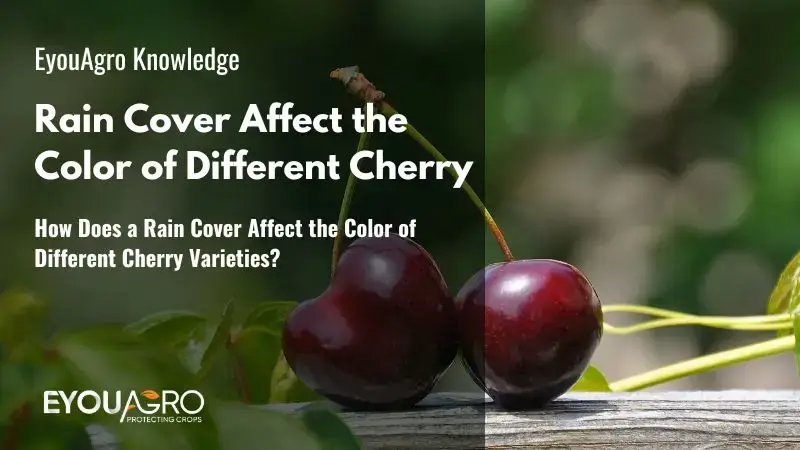Choosing the correct installation method for hail netting is a crucial decision that can significantly impact the protection and longevity of your crops. The two most common methods, canopy and roof installations, each have unique advantages and are better suited to specific environmental conditions and customer preferences. Understanding the differences between these methods can help you make an informed choice to ensure the best results for your project.
Which Hail Netting Installation Method Should You Choose?
The choice between a canopy or roof installation depends on factors such as wind conditions, local climate, and practical preferences. Both methods have unique strengths tailored to different situations, and selecting the right one can ensure the success of your hail protection system.
Regional Preferences and Customer Practices
One important factor to consider is regional preferences and common practices. European customers often opt for roof-style installations, while customers in Australia and New Zealand typically prefer canopy installations.
This difference reflects the varying environmental conditions and farming traditions in these regions.
For example, roof installations are better suited to areas with frequent strong winds, while canopy installations are more common in regions with milder weather.
Wind Resistance and Structural Design
The structural design of the hail netting plays a critical role in determining its effectiveness and durability under specific weather conditions. A roof installation features a sloped top, which allows it to deflect wind more effectively. This design reduces wind pressure on the structure and minimizes the risk of damage, making it a better choice for areas prone to strong winds or storms. In contrast, a canopy installation has a flat design, which is easier to set up and may be more cost-effective. However, the flat surface is more susceptible to wind stress and may not be ideal for regions with high wind speeds.
Farmers in areas with calm or predictable weather patterns may find the canopy method sufficient for their needs.
Consult Local Experts and Professionals
To ensure the best results, it is highly recommended to seek advice from local installation experts or agricultural professionals.
These experts are familiar with the specific conditions in your region and can provide tailored recommendations on which method would work best for your situation.
They can also help ensure the correct installation of the chosen system, maximizing its effectiveness and lifespan.
Flexibility and Customization
Both canopy and roof installations can be customized to fit the specific requirements of your orchard, vineyard, or field. Factors such as crop type, land size, and available budget can also influence your choice. For instance, if you prioritize ease of installation and lower costs, a canopy might be the preferred option.
On the other hand, if your main concern is durability in harsh weather, investing in a roof installation might be the better choice.
Conclusion
Selecting the right installation method for hail netting is essential for protecting your crops and ensuring the longevity of the system.
A roof installation provides superior wind resistance and durability, making it ideal for areas with strong winds. Meanwhile, a canopy installation offers a simpler and more economical solution for regions with calmer weather.
Ultimately, the best choice will depend on your local climate, specific needs, and expert advice.
Don’t hesitate to consult local professionals to make an informed decision and achieve the best possible outcome for your agricultural project.
Choose the Perfect Hail Netting Installation Method for Your Farm!
Whether you need the wind resistance of a roof installation or the simplicity of a canopy design, selecting the right method ensures optimal crop protection and system longevity. At EyouAgro, we offer tailored solutions to meet your specific environmental and agricultural needs.
Not sure which method suits your farm best? Contact us today for expert guidance and customized hail netting solutions.










